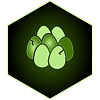Career Guidance for Children who want to work with Animals
- Home
- Courses Directory
- Animal Care
- Intro to Animal Caretaker
Curriculum
- 1 Section
- 2 Lessons
- Lifetime
- Basic Information on Animal Caretaker2
Dugong Facts and Taxonomy

Lesson 2
Dugong Etymology
Definitions
Etymology is the study of the origin of words and the way in which their meanings have changed throughout history

Origin of the Word
Dugongs are typically grey or brown in color and have a rounded, streamlined body with a large, paddle-like tail. They have a small head with a pointed snout and large, flexible lips for feeding on seagrasses.
Dugongs are also called sea cows because they use their strong, cleft upper lips to graze on sea grasses they uproot from the seafloor.
The word “dugong” comes from the Malay language, where it is called “duyung”. The term “duyung” is thought to have originated from the Old Javanese word “duyungon”, which means “lady of the sea”.
The Malay language has a significant influence on the languages spoken in the Southeast Asian region. As a result, the word “duyung” was adopted by other languages in the region, such as Indonesian and Tagalog.
When the term was introduced into English, it was initially spelled as “dugong” instead of “duyung”. The exact reason for this change in spelling is unknown, but it is believed that it may have been due to the difficulty of transliterating certain Malay sounds into English.
Word in other Languages
- Afrikaans = dugong
- Arabic = الأطوم (al'atwm)
- Chinese = 儒艮 (Rúgěn)
- French = dugong
- German = Dugong
- Hebrew = דוגונג
- Russian = дюгонь (dyugon)
- Spanish = dugongo
Basic Dugong Facts

Average Length
3 metres (9.8 ft)

Average Weight
250 to 900 kg (551 to 1,984 lb)

Habitat
They are found in shallow, coastal waters of the Indian and Pacific Oceans, particularly in the Great Barrier Reef and other parts of Australia.

Lifespan
Up to 70 years in the wild

Offspring
1 calve

Gestation
360 days

Speed
10 km/h (6 mph)

Resting Heart Rate
80 to 87 beats per minute

Estimated Global Population
45,000

Activity Period
Both Diurnal and Nocturnal

Main Diet
Herbivore (seagrass)

Conservation Status
Vulnerable
Frequently Asked Questions about the Dugong
No, they have mammilian lungs, so they breathe in oxygen from above the surface of the water through nostrils. They can hold their breath for up to 11 minutes and dive down to 33 metres to feed.
Dugongs are herbivores and primarily feed on seagrasses, which they locate using their highly sensitive snouts. They may also occasionally eat algae and other Aquatic plants.
Yes, dugongs are considered vulnerable to extinction due to a variety of threats, including habitat loss, boat strikes, and fishing nets. They are protected by law in many countries, but illegal hunting and habitat destruction continue to pose significant threats to their survival.
Dugong Taxonomy

Kingdom: Animalia
Phylum: Chordata
Class: Mammalia
Order: Sirenia
Family: Dugongidae
Genus: Dugong
Species: Dugong dugon
Classification & Species
Scientific Classification
Each living creature is classified first according to one of the overarching 7 kingdoms (Bacteria, Archaea, Protozoa, Chromista, Plantae, Fungi, and Animalia). From there it is gradually separated and divided all the way down to the individual species level. This is done to assist scientists when they study specific species to know what it is and to effectively communicate their findings without creating confusion.
Kingdom:
The Dugong is first classied as an animal (Animalia)
Phylum:
It is further an animal with a vertebrae or backbone (Chordata)
Class:
As a Vertebrate is is classified toether with the mammals (Mammalia), due to specific criteria, such as giving live birth and feeding the young milk.
Order:
Based on several characteristics, it is further classified in the Order Sirenia. One of these characteristics is that it is a mammal that can live in water and has a herbivorous diet. The dugong shares the Order with the Manatee.
Family:
The Order is split into two Families with the dugong therefore being the only member within the Dugongidae Family and Genus
Species and Subspecies
Each of the species, no matter from which Kingdom, has two words in its scientific name. This helps with the exact naming and identification. This naming process is called scientific nomenclature.
The nomenclature of this species means
Family – Dugongidae: Meaning those of to the Dugong. The suffix “-idae” is used in taxonomy to denote a family of organisms. It comes from the Greek word “eidos”, which means “form” or “species”.
Genus – Dugong: A similar root as the Family name
Species Name – Dugong dugon: The word “Dugong” comes from the Malay language, where it is called “duyung”.
According to the current scientific classification, there is 1 species with n0 subspecies.

END OF COURSE
That’s it!
Remember that this Course forms a part of a larger series, so don’t forget to check on the others!
You can now always come back to this Lesson and use the information as a reference, or just to check up on facts.
REMEMBER:
Click this “COMPLETE” button when you have finished this LESSON, otherwise it will not register as completed.
THEN
After the Lesson reloads. click on the “COMPLETE COURSE” button on the right to finish the Course, and earn the rewards!


